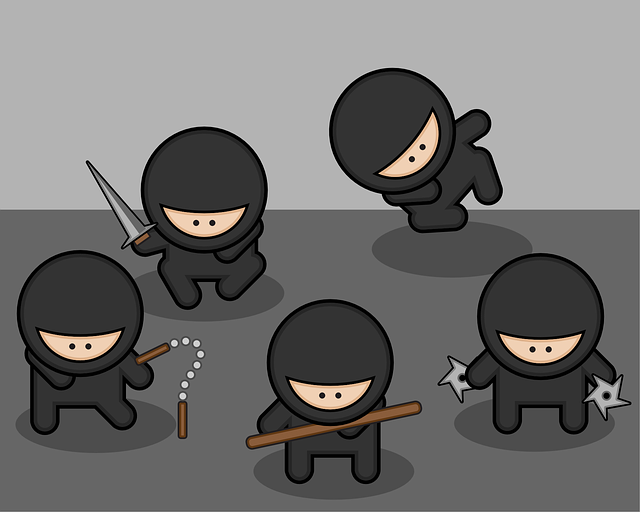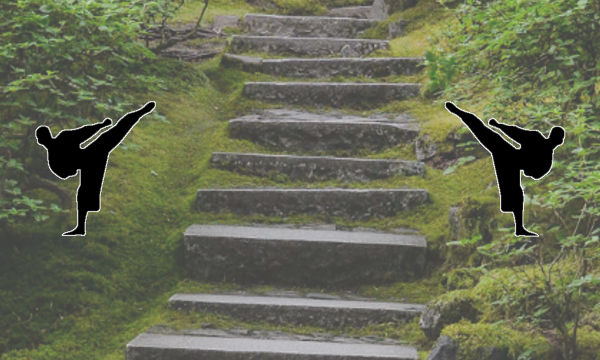
“The art should definitely be taught to suit the individual and not the individual the art.” Ed Parker, Founder of American Kenpo
In this post I talk about self-defense tactics, working with kids, and different ways to think about blocking.
The Martial Arts New is a monthly series that takes a look at articles, videos, podcasts and books that can help to improve your knowledge of the self-defense, technique, history, teaching and what ever else may catch my eye during the month.
Articles

Youth Physical Development Model: A Scientific Compass for Every Karate Sensei!! (Part 1)
This article contains several charts that identify key areas to focus training based on age and gender. For example, with younger children, you will accomplish more developing fundamental motor skills and strength as opposed to sport specific skills.
In Karate kata and self-defense drills can be considered the sport specific skills. The fundamental motor skills are what you get when you break down sport specific skills. The younger the student, the more that you need to break it down.
While at a seminar this weekend, one instructor used the phrase “Break it down to the ridiculous,” and used introducing a natural stance to young students as an example. Back straight, eyes focused ahead, arms relaxed and in front, feet spread – These are all points that we take for granted now, but need to be explained and demonstrated to younger students.
14 Self-Defense Tips Every Woman Should Know
These are good suggestions for everyone, although there is only 13. They skip number 10 on the site
- Mentally Prepare Yourself
- Have a Plan
- Follow Your Intuition
- Be Aware of Your Surroundings
- Don’t Look Like a Victim
- Be Car Smart
- Predict Dangerous and Controlling Behavior
- Know Your Strengths & His Weakness
- You Have the Right to Fight
- Don’t Be Relocated
- Stay Alert on Vacation
- Be Safe at Home
- Prevent Date Rape – Date rape is still rape. Defend yourself against someone you know just like you would against a stranger on the street.
To predict dangerous behavior, you should be aware of things to look for.
Common Pre-Incident Indicators (P.I.N.S).:
- Forced Teaming — When someone tries to pretend he has something in common or is in the same predicament as you when it isn’t true. (“Let me help you with those bags of groceries. We don’t want that ice cream to melt.”)
- Charm – Being polite and nice to manipulate someone. (“I can’t let you carry all these bags by yourself. Let me help you get them inside.”)
- Too Many Details – If someone is lying they add excessive details to make them seem more credible. (“I’m going to your floor anyway. I’m meeting a friend, but I’m running late – my watch stopped working. So, we need to hurry. Come on. We have a hungry cat waiting for this cat food.”)
- Typecasting – An insult to get you to talk to someone you otherwise wouldn’t. (“There is such a thing as being too proud. Now stop being silly and hand me another bag.”)
- Loan Sharking – Giving unsolicited help and expecting favors in return. (“I’ve carried your groceries up four flights of stairs; just let me put them on the counter.”)
- Unsolicited Promise — A promise to do (or not to do) something when no such promise was asked for; this usually means the promise will be broken. (“You can leave the door open, I’ll leave as soon as I put the bags down, I promise.”)
- Discounting the word “no” — Refusing to accept rejection.
The above list (shared in the article) originally come from the book The Gift of Fear by Gavin de Becker. I haven’t read this yet, but it is on my “to read” list.
How to Be a Good Karate Parent (Hint: Use These 6 Magical Words)
While the article is about karate, this applies to anything that our kids are doing.
According to psychological research, there are scientifically proven phrases that parents can use with their kids to ensure they stay motivated and super happy with their performance.
The top three statements moms/dads can make as their kids perform are:
Before Performance
- “Have fun.”
- “Do your best.”
- “I love you.”
After Performance
- “Did you have fun?”
- “I’m proud of you.”
- “I love you.”
And the number one phrase that made kids feel the best when they played sports is “I love to watch you practice.”
Videos
![]()
3 and 4 year olds – Physical SOD
Sometimes timing is a weird thing. The same day that I was reading the article about Youth Physical Development Model that is linked above, my instructor sent me a link to this excellent video by Melody Shuman.
It’s important to recognize what is normal for a student’s physical stage of development, and to communicate that to parents. When a young student keeps dropping his arm or tends to roll over on her side after sitting for only a few seconds, it’s not because they are lazy. It’s because they are still developing strength in those muscle groups. The kids who seem to be able to do that without problem are already above their physical stage of development.
3 and 4 year olds – Intellectual SOD is a related video that is worth watching in conjunction with the first one.
10 Commandments of Self Defense
Prof David James of the Vee Arnis Jitsu School of Self Defense talks about 10 important rules to be successful in a self defense situation. The video demonstrates each concepts as he explains it.
In the opening of the video, there is a reenactment of a street conflict. Watch it a second time and notice the reaction of the other people on the sidewalk.
The summary of the 10 points below is my take away on them. Many of Prof James’ rule apply after the situation has escalated to a physical confrontation. Avoidance, Awareness and Deescalation are still the safest ways to avoid injury, but when they fail, it’s important to understand the physical nature of confrontation.
- Evaluate the Situation – Identify all potential attackers or threats.
- Three Foot Rule – You have to close the gap if you want to do damage.
- Start in a non-threatening manner – Allow the attacker to become overconfident.
- Control the Focus – Control the level of Eye contact. Understand when maintaining eye contact increases or decreases the threat.
- Motion Causes Motion – Understand how the body reacts to a strike.
- Element of Surprise – Attack when the threat is distracted (ie talking/threatening).
- Strike from the Closest Point – Use the shortest distance to eliminate reaction time.
- Change the Focus – Redirect the attacker’s vision/attention away from you.
- High and Low Concept – Strike at opposite ends of the spectrum (high, low or inside, outside)
- Faster Forward/Slower Backwards – You can move faster forward, then your opponent can move backwards. Maintain the offensive once you have it.
Gedan-Barai Limb Control
An interesting look at how to use the downward block to set up locks, chokes, take downs and strikes.
Books

 Martial Arts Character Education Lesson Plans for Children
Martial Arts Character Education Lesson Plans for Children
Now that title is really a mouthful. Lately I’ve been looking at different ways to improve myself as an instructor. At Action Karate, we have an excellent program for training new instructors, and one of the aspects that we focus on is the mental benefits of karate. It’s always good to see how other people approach the topic, and over the last week or so I’ve read about a half-dozen of Mike Massie’s books. None of them have been a disappointment. His work is definitely on my recommendation list for instructors who want to improve as teachers and as school owners.


